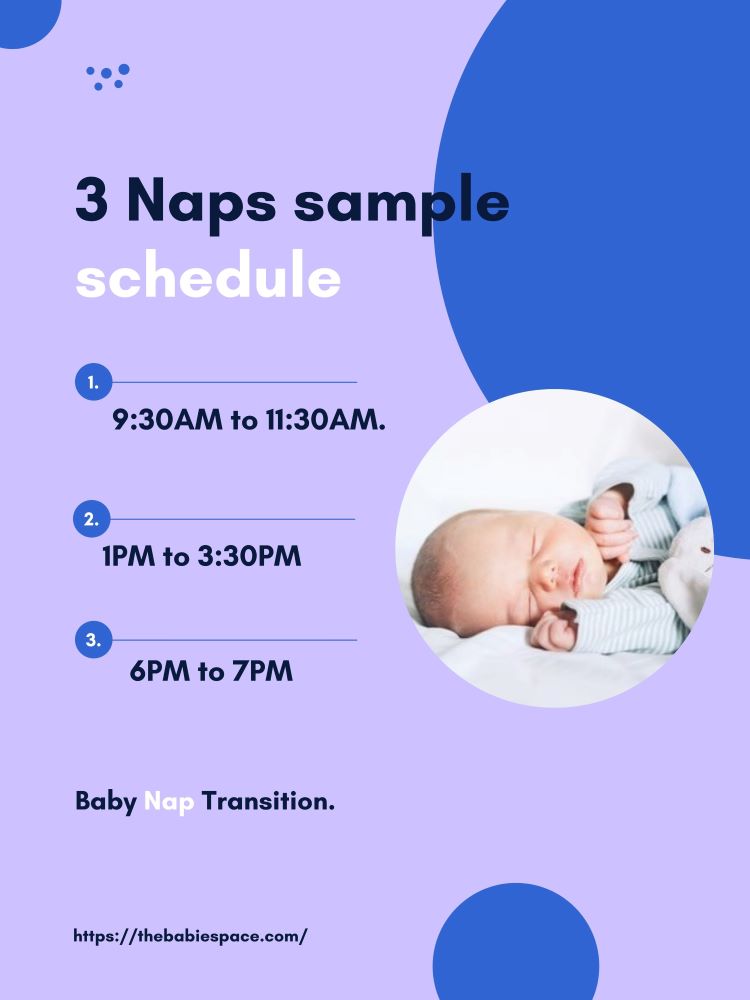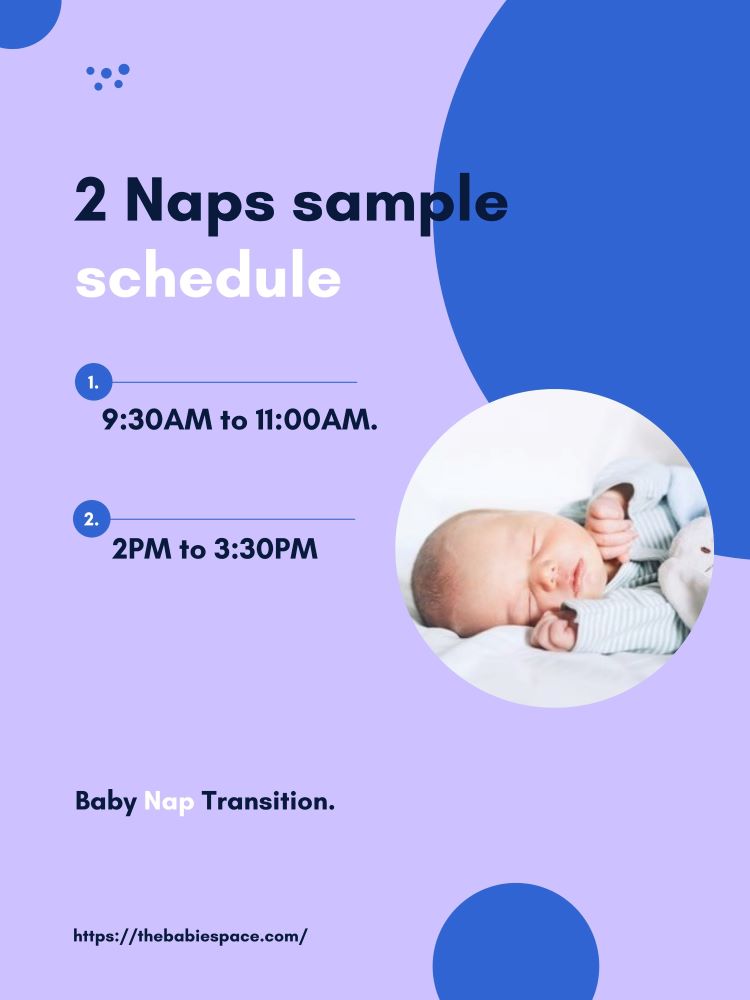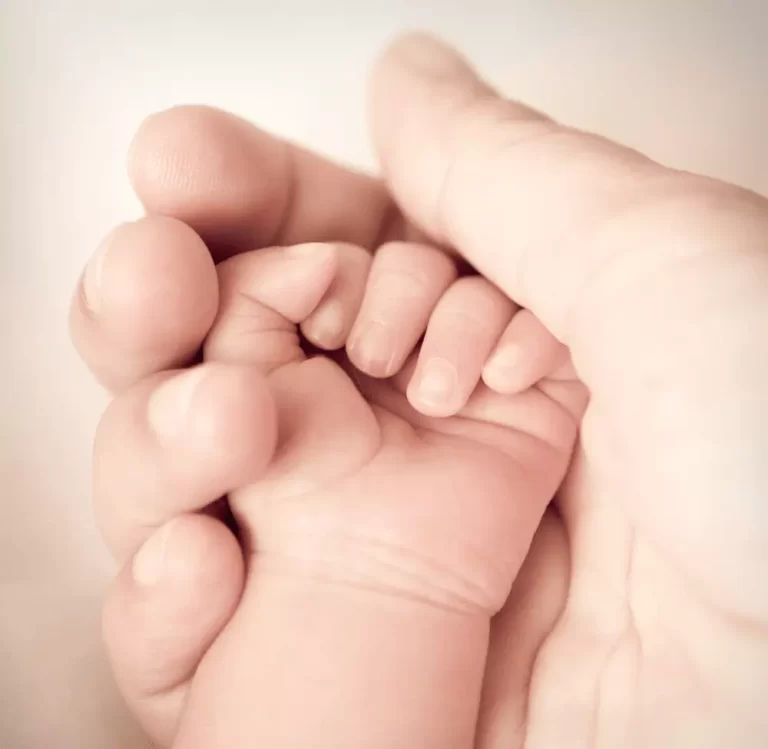BABY NAP TRANSITION Different Stages

Last updated on July 7th, 2025 at 03:13 pm
Baby nap transition can be a big milestone for both parents and babies. Making the switch from more to fewer naps is important but keep the transition gradually, so your baby can get used to the new sleeping environment and avoid any potential accidents.
Nap transition is divergent in every individual, I do remember when my firstborn was in the nap transition phase. He started skipping the nap earlier even three months of age than my second born who was a sleepaholic, for this reason, her routine switched in a different way. So without any further delay In this blog post, We will have an insight related to the baby’s sleep transition stages, and practical ways to ease the baby’s nap transition.
What is a baby Nap Transition?
Newborns usually sleep in a fair amount of hours during the day, which is divided into small naps, moderately it is decreased by the passage of time when the baby is 3 to 4 months of age. Baby Nap transition is When he starts to reduce the number of naps during the day, it must be gradually weaned down from 4 to 3 next 3 to 2, and finally, 1 to zero as the baby gown up. the transition can be tricky for both the baby and the parents. There are some useful ways to make this process easier, and help the baby smoothly move from more naps to less number of naps.
Tips to make baby nap transition easier
- The first tip to make the transition easier is by gradually altering the baby’s surroundings in preparation for the new nap time. For example, if you’re transitioning your baby from 4 naps a day to 3, begin by moving their bedtime earlier by about 15 minutes each day until they are ready for their new three-nap schedule. This will help them get used to sleeping at the new time and make the transition smoother.
- The second way to transit baby naps is by shortening the current nap. If your baby is taking a two-hour nap, for example, begin by cutting it down to 1.5 hours. Over time, you can gradually shorten it more and more until they are ready for their new nap schedule.
- The third tip to make the transition easier is to keep the same routine throughout the process. This will help the baby to get used to it. Keeping a routine also helps maintain consistency, which is important for setting any advanced routine for a baby.
Transition from 4 to 3 nap
- When transitioning your baby from 4 naps a day to 3, begin by moving their bedtime earlier by about 15 minutes each day until they are ready for their new three-nap schedule. This will help them get used to sleeping at the new time and make the transition smoother.
- Around 4 months of age, most babies are ready to transition from taking four naps a day to taking three. Start by cutting out the 30-minute nap and gradually move your baby towards taking two 1.5-hour naps and one 3-hour nap. This schedule will last until around eight or nine months of age.
- The thing to remember: Whatever method you choose to use, be patient and go at your baby’s pace. The transition from one nap to another can be tricky but with some patience and effort, it can be done smoothly and without too much stress.
Transition from 3 to 2 naps a day
Around 7 or 8 months of age, most babies are ready to transition from taking 3 naps a day to taking 2. Start by cutting out the 1.5-hour nap and gradually move your baby towards taking one 2.5-hour nap and one 30-minute nap. This schedule will last until around 12 months of age.

Transition from 2 to 1 nap a day
- Around 11 or 12 months of age, most babies are ready to transition from taking two naps a day to taking one. Start by cutting out the 30-minute nap and gradually move your baby towards taking one 3-hour nap. This schedule will last until your baby happily drops the nap during the day which also varies up to six years of age.

Signs of baby nap transition readiness
Signs of baby nap transition readiness or how do you know when baby is ready to drop a nap?
Is quite unlike. no one-size-fits-all answer for when your baby is ready to make the transition from crib to bed. Each baby is different and will reach this developmental milestone at his or her own pace. However, there are some general signs that your baby may be ready for a nap transition:
– He or she is teething and wakes up more frequently during the night
– He or she is crawling or starting to walk
– He or she is more active and playful during the day
– He or she is resistant to falling asleep in the crib
– He or she is sleeping through the night
If your baby is showing any of these signs, it may be time to start thinking about making the transition to a bed. Talk to your pediatrician if you have any questions or concerns.
Conclusion:
So in the end, I hope you must have got an idea about how to make a smooth baby nap transition. Transitions, like most things in life, are not always easy, but with patience and preparation, it can be a relatively smooth process for both baby and parents alike.
Follow the tips given in this article and everything will be just fine! Thanks for reading!
People Frequently Ask:
What to expect when transitioning to naps?
Baby nap transition is different in every child, nevertheless, the majority of the children are the same in nap dropping. It takes almost four to six weeks to set the pattern when you can say now my child is at this particular stage. Consistency is the key to success
How long does a nap transition take?
Well, as is mentioned above the baby nap transition could go from 4 months to up to 5 or 6 years when children stop taking regular naps in the day, still, it could be different in every child.
At what age do babies go from 4 naps to 3?
It varies from person to person, but usually, babies under 6 to 9 months of age start skipping the morning nap that could be because of bathing and eating semi-solids leading to a decrease from 4 to 3 naps a day.






